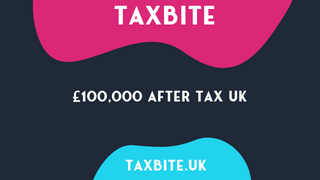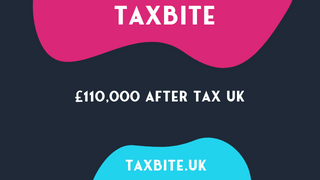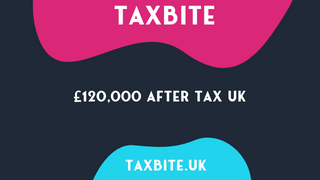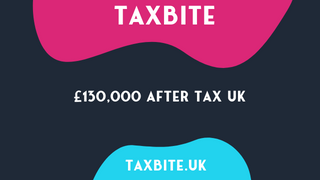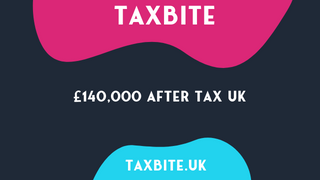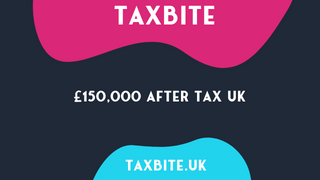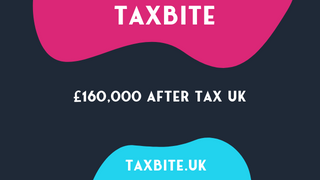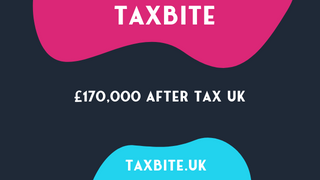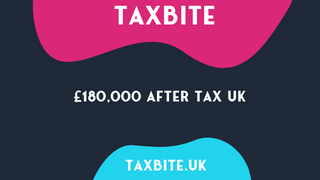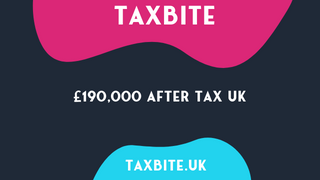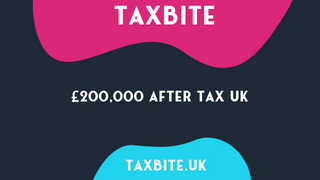Are you confused by the intricacies of Income Tax and National Insurance Contributions? Look no further. This section will simplify both, and help you understand the various income tax bands that apply in England, Wales, and Northern Ireland. Additionally, we will explore the effect of the Personal Allowance on Income Tax and how it can impact your take-home pay. Get ready to gain clarity on all things tax-related!
Understanding the income tax bands in England, Wales, and Northern Ireland is important for people who want to get the most out of their post-tax income. The tax system in those areas has different levels of tax, based on income and personal allowances. These allowances are taken away from the gross pay before taxes, and there are separate brackets of taxable income, with higher rates for higher earners.
To make things easier, we have made a table that shows the income tax rates and related personal allowances for 2021 to 2022. It’s essential to remember that if someone earns more than £100,000, their personal allowance goes down by £1 for every £2 earned. And if someone earns over £125,140, they don’t get any personal allowance.
Apart from income tax, individuals need to think about other deductions from their pay, like National Insurance Contributions, student loan payments, and pension contributions. The NICs level depends on employment status and earnings, while student loan payments depend on the loan plan.
If tax codes change or personal allowances go down due to higher salaries, take-home pay after taxes can be affected. So, understanding the details of income tax bands in England, Wales, and Northern Ireland can help individuals get the most out of their post-tax income. Professional financial advisers can give advice on how to optimise income tax, such as using a contracted money purchase pension scheme and salary sacrifice options for pensions.
Income Tax in England, Wales, and Northern Ireland is affected by Personal Allowance. This refers to the amount of money an individual can earn without paying taxes. This year (2021/22), it is set at £12,570. Anyone earning less won’t have to pay taxes, which is good for their salary.
However, when earnings exceed this threshold, taxes are applied and the percentage rate depends on their annual income. For instance, those earning £12,571 – £50,270 will be taxed 20%.
Individuals earning over £100,000 have their Personal Allowance reduced, resulting in higher taxes. For every £2 earned above the threshold, the allowance is reduced by £1.
To manage finances in relation to Income Tax payments, individuals should use online calculators or seek advice from financial professionals.
Earning a six-figure salary is a coveted goal for many of us, but it’s important to understand the impact of crossing the £100,000 (or $119,509 USD based on current exchange rates) threshold.
In this section, we’ll dive into the higher income tax rates and additional taxes you may encounter along the way. We’ll also look at the importance of calculating take-home pay using tax calculators to help you make the most of your hard-earned money. With these insights, you’ll be on your way to building a solid financial foundation for your future.
When individuals earn above £100,000, higher taxes come into play, impacting their take-home pay. Income is taxed at a rate of 45%. Plus, for every £2 of income above this, their personal allowance is reduced by £1. When earnings reach £125,000, their personal allowance becomes zero.
It’s important to calculate take-home pay. Tax calculators are essential for contracting jobs. Payslips may include deductions like National Insurance Contributions (NICs), student loan repayments, and pension contributions. NICs provide state-provided benefits.
Employers may offer salary sacrifice to reduce taxable income. Utilizing a contracted money purchase pension scheme may allow one to pay less tax on income above £50k while increasing pension contributions.
Changes in tax codes or loss of personal allowance can save on taxes. Being aware of all the factors affecting one’s take-home pay can maximize earning potential while reducing taxes.
Want to calculate take-home pay using a tax calculator? Here’s a five-step guide!
Keep in mind that individual circumstances can affect take-home pay. Tax code or allowance changes can influence earnings.
To ensure accurate results, review calculations often and update any changes. That way, individuals can better manage their finances and stay informed about deductions.
Remember to budget for National Insurance, student loan repayments, and pension contributions. Follow these steps and budget accordingly to stay on top of your finances.
Ready to delve deeper into your payslip? Let’s explore the extra deductions that can affect your take-home pay beyond income tax. In this section, we’ll examine the subtractions made for National Insurance contributions, student loan repayments, and pension contributions. It’s important to stay informed about these details and manage your finances wisely!
Employees must pay National Insurance Contributions (NIC). It is based on one’s gross earnings and both employer and employee contribute. NIC grants access to certain state benefits, e.g., State Pension, Maternity Allowance, and Bereavement Payment.
No limit to how much NIC is paid for those who earn more than £100,000 a year. However, if one has multiple jobs or switches within the tax year, NIC payments may be affected.
Self-employed people have different arrangements for Class 2 and Class 4 NIC payments depending on their profits.
It is important to remember NIC when calculating total tax liability. Repaying student loans is like playing Whac-A-Mole – as soon as one debt is settled, another pops up!
Paying back government-funded student loans is mandatory. It appears on payslips, so it’s important for people who took out student loans to keep track of their repayment threshold. How much they have to pay back depends on their earnings and the amount borrowed. When their annual income is over £26,575, they start paying back the loan.
For those who started their studies before September 2012, the fixed percentage for repaying is usually 9%. For those who started on or after September 2012 and have “Plan 2,” the percentage is also 9%. This helps people manage their debt while working. But, it can affect their take-home pay too.
It’s important to remember that student loan debt isn’t taxable income and doesn’t need to be declared at tax time. It’s a separate deduction on the payslip, labeled “student loan repayment.” If no payments are being made, because the individual hasn’t reached the repayment threshold or already paid off the loan, it won’t appear on the payslip.
So, remembering the threshold is important to ensure the deduction appears and the loan is paid off efficiently.
Understanding pension contributions is essential for managing finances and guaranteeing a secure financial future. This includes earmarking a portion of one’s income for retirement plans and schemes. It is deducted before tax calculations on gross salary, reducing taxable income. This amount can be a set figure or a percent of earnings. Age and other factors can affect the yearly limits of these contributions.
In addition to tax relief benefits, pension contributions offer opportunities for long-term investments. Many employers give workplace pensions that include contributions from both employees and employers, making it simpler to save for retirement.
Having knowledge of all aspects of pension contributions is key for making more informed financial decisions. It gives individuals the chance to secure their financial future, providing comfort and freedom from financial worries in retirement.
Do not treat comparing salaries between tax years as a game of Monopoly, and do not assume you always pay income tax and never pass “Go.” Taking active steps to manage pension contributions can have a substantial positive effect on one’s financial stability.
Tax regulations are changing, so it’s important to understand how salaries will differ between years. It’s crucial to compare salaries between tax years, as this helps people plan their finances. If someone earns £100,000 after tax in 2023, their net income will be different to those who earned that amount in previous years.
See the table below to find out what the net income is for people earning £100,000 in 2020, 2021, 2022, and 2023. This takes into account tax rates and personal allowances.
| Year | Net Income |
|---|---|
| 2020 | £66,640 |
| 2021 | £67,440 |
| 2022 | £69,120 |
| 2023 | £70,840 |
The table shows that net income is expected to increase steadily in the coming years. This is because of changes to tax rates and personal allowances, and other tax regulations.
It’s important to stay informed about tax regulation changes, so you’re fairly paid for your work. The table here demonstrates how small changes in tax rates and allowances can have a significant effect on take-home pay.
Got a salary increase or secured a high-paying job? Let’s discuss the numbers. If you earn £100,000 after tax in 2023, you may be curious about how much of it will actually end up in your bank account. Our analysis of after-tax take-home pay for this income bracket includes all important details, such as contracted money purchase pension schemes and salary sacrifice. Prepare to make informed financial choices and plan ahead for the future.
A contracted money purchase pension scheme is a workplace retirement plan where employees contribute from their salary into an investment fund. These funds are used to buy an annuity, which offers a fixed income in retirement. Both worker and employer put money in the scheme, and the employee takes on the investment risk.
For a comfortable retirement, it is important to plan ahead. There is no guarantee about income after retirement. Flexibility is a plus, as the employee can pay extra, transfer other pensions, and choose when and how much to use from savings.
From April 2021, employers must pay at least 3% towards the employee’s pension. The total payment should be made monthly. This scheme can give great cost savings while helping to finance retirement.
It is worth bearing in mind that while pension contributions may have tax advantages, they should be thoughtfully weighed-up in terms of cost.
Salary sacrifice can be a great option for high earners who exceed the £100,000 earning threshold. By using this system, they can avoid higher tax rates by exchanging their earnings for non-cash benefits.
These benefits are not taken into account when calculating their net taxable income. It’s important to check with your employer whether they offer any salary sacrifice schemes and how they operate.
You should bear in mind that this system could reduce your state benefits, such as statutory maternity/paternity pay, if your salary is lowered below the lower earnings limit. It’s wise to prepare for possible tax code changes and the loss of personal allowance when adjusting your income.
As we consider how to adjust our income for the upcoming years, it’s important to take into account various factors that can impact our finances. In this section, we’ll take a closer look at the changes to tax codes that will influence how much of our income goes towards taxes. However, there is no information provided about any specific changes to tax codes that will occur in 2023, so we cannot make any accurate predictions at this time.
Additionally, we’ll explore the potential loss of personal allowances and how this could affect our take-home pay. It is important to note that personal allowances vary based on individual circumstances such as income level and marital status, so the impact on take-home pay will differ for each person. Join me as we dive into the details of these important considerations for managing our finances.
Tax codes are essential to the UK’s tax system. They decide how much income tax someone pays, based on their earnings. Changes in tax codes happen from various causes, such as employment status changes, promotion, redundancy, or retirement.
These changes can lead to different amounts of taxes, depending on individual factors. These include personal allowances based on age and relationship status. The regular rate band for basic taxpayers may change for economic needs or taxation policies.
National Insurance contributions (NICs) may also affect income tax payments. Any shifts in these contributions can influence take-home pay. Student loans repayments and pension contributions can also affect tax code changes.
Updating one’s tax code is important, especially when there are big alterations in earnings or job status. Examining one’s online account with HM Revenue & Customs (HMRC) is a great way to make sure tax codes are accurate.
It is essential to be mindful of significant tax code shifts and their impact. Overpaying or underpaying income taxes can be expensive, and keeping tax codes up-to-date can stop unnecessary financial losses.
The loss of personal allowance can cause huge financial problems for people with an adjusted net income above £100,000. Their earnings before paying income tax will be lower. For every £2 over the £100,000 threshold, their personal allowance reduces by £1 until it reaches zero.
So, those affected may have to pay more income tax, and should consider changing their tax codes or using a tax calculator to estimate their take-home pay.
It is important to remember that the reduction in personal allowance is not the same for everyone earning more than £100,000. Factors such as student loan repayments and pension contributions will affect how much their personal allowance decreases. And if their adjusted net income is over £125,000, they will lose their full personal allowance, meaning higher rates of income tax.
To try and increase their take-home pay, they could look into alternatives such as salary sacrifice or contracted money purchase pension schemes.
A salary of £100,000 after tax by 2023 is achievable. It will take qualifications, expertise and experience in high-paying fields such as finance, law or medicine. Tax-efficient investments and technology can diversify income streams.
UK income tax thresholds can affect take-home pay for high earners. So staying informed and up to date with tax regulations is key.
Planning finances and using tech are a must if you want to reach the £100,000 goal. Challenges may arise, but staying informed will help you get there.
If you earn a yearly income of £100,000 in 2023, your take-home pay will be around £5,587 per month or £67,050 per year. This is after deducting taxes and National Insurance contributions.
If you earn £100,000 in England, Wales, or Northern Ireland, you will pay 0% tax on the first £12,570, 20% tax on the amount from £12,571 to £50,270, 40% tax on the amount from £50,271 to £125,140, and 45% tax on the amount above £125,141. Additionally, you will pay National Insurance contributions of £5,518 per year. This results in a take-home pay of around £5,587 per month or £67,050 per year.
No, you will not be subject to 60% tax if you earn £100,000 in 2023. The 60% tax only applies to earnings over £125,140, which is the point where your personal allowance is reduced to zero.
If you earn a salary of £100,000 in 2023, around 33 pence of every pound you earn will go towards taxes and National Insurance contributions. This amounts to a total of £32,950 for the year.
In addition to taxes and National Insurance contributions, your payslip may show deductions for pensions, student loans, and company car taxes. The amount of these deductions will depend on your specific employment situation.
The tax calculator uses your salary to calculate the amount of income tax and National Insurance contributions that will be deducted from your pay. You can enter details such as your tax code, student loan repayment plan, and pension contributions to get a more accurate estimate of your take-home pay. The calculator may also offer options for being a resident in Scotland, contracting out, and receiving one-off bonuses.
Here’s a list of similar salaries:
